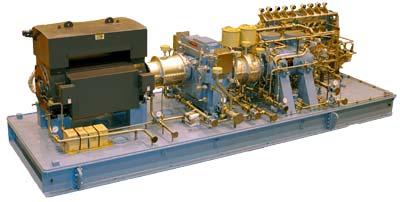A gas reducer is a technical device that provides a decrease in the pressure indicator of a gas mixture or an individual gas in any container or gas pipeline. The same device ensures the constancy of the pressure indicator in the gas pipeline or tank (regardless of its change under the influence of various factors).
Marking and state standard (GOST 13861-89)
• Operating principle: direct and reverse.
• Purpose and place of use: balloon gears (marked “B”), ramp gears (“P”), network gearboxes (“C”).
• Type of gas for the reduction of which are used: acetylene reducers (marked “A”), oxygen reducers (“K”), propane-butane reducers (“P”), methane reducers (“M”);
• The number of steps (degrees) of gas reduction and pressure control method:
- single-stage gearboxes with spring pressure regulator (marked “O”);
- two-stage gearboxes with spring pressure regulator (marked “D”);
- single-stage gearboxes with pneumatic pressure regulator ("Z").
In accordance with the rules of GOST, they must differ in the color in which their body is painted. The device of the gas reducer also has a difference in the connecting elements that are necessary for fastening to the tank or to the gas pipeline (using union nuts, the thread on which corresponds to the thread of the fitting located on the valve of the tank or gas pipeline). An exception to this rule are acetylene gas reducers, which are attached to tanks or pipelines with a clamp and a thrust screw.
The main parameters of gas reducers:
• Pressure at the inlet of the gas reducer: as a rule, the indicator for compressed (also referred to as “non-liquefied”) gases is in the range up to 250 atmospheres and within 25 atmospheres for dissolved and liquefied gases.
• Pressure at the outlet of the gas pressure reducer: typical devices have an indicator of 1-16 atmospheres, although manufacturers sometimes offer other modifications.
• The gas flow rate when using a gearbox (depending on the type of gearbox and its intended use) ranges from several tens of liters of gas per hour to several hundred cubic meters over the same period of time.
The main types of gas reducers:
• An air reducer, also called a regulator, which is designed to be used to lower atmospheric pressure and maintain a constant pressure in air networks and communications of industrial enterprises. This type is also used in underwater operations and autonomous diving in order to lower the pressure indicator of the air breathing mixture to an appropriate level.
• Oxygen. The main scope of application and use is autogenous work, gas welding, cutting or soldering at various enterprises of metallurgy and mechanical engineering. Also used in medical practice and scuba diving.
• Propane. Industrial use - similar to the previous one (plus heating work). Also used in construction work (using this type of gearboxes, bitumen coatings are laid). In addition, this type is used for domestic purposes in gas stoves of city apartments and other residential premises. They are subdivided into gearboxes with a constant gas pressure indicator established by the manufacturer, as well as samples with the possibility of regulating this indicator.
• Acetylene. The main scope is gas welding of pipelines, as well as their cutting.
The gas reducer is designed for non-combustible or combustible gas mixtures and gases. Combustible gas gearboxes , which include methane and hydrogen, are made with left-hand thread to avoid the possibility of accidentally connecting the used gearbox used to work with combustible gases to a tank filled with oxygen. Tanks designed for inert gases such as argon, helium or nitrogen have a right-handed thread. A similar thread is in containers with oxygen. Accordingly, for working with inert gases there is the possibility of using oxygen gas reducers.

The gas reducer can also act as a safety valve, relieving excessive gas pressure. In English, these concepts are different. Conventional gearboxes are called pressure regulators. Gearboxes used, inter alia, as a safety valve - back pressure regulators. Perhaps the combined use of pressure relief valves and gearboxes. In case of such use, a gas reducer should be installed at the entrance to the gas transmission system section. In this case, it regulates the flow of gas, and the valve installed at the outlet, if necessary, releases excess pressure of the gas or gas mixture. These measures provide overall system stability.
The principle of operation and characteristics of the device
The principle of operation of a gas reducer is determined by its characteristics. So, direct-acting gearboxes have the so-called “falling characteristic”. This means that the working pressure of the gas decreases as it flows from the tank. Reverse gas reducers have the so-called "increasing characteristic". In this case, when the pressure of the gas or gas mixture in the tank decreases, the indicator of the working pressure increases. Gearboxes also differ in type of construction, but the principles of operation and the main details are basically the same.